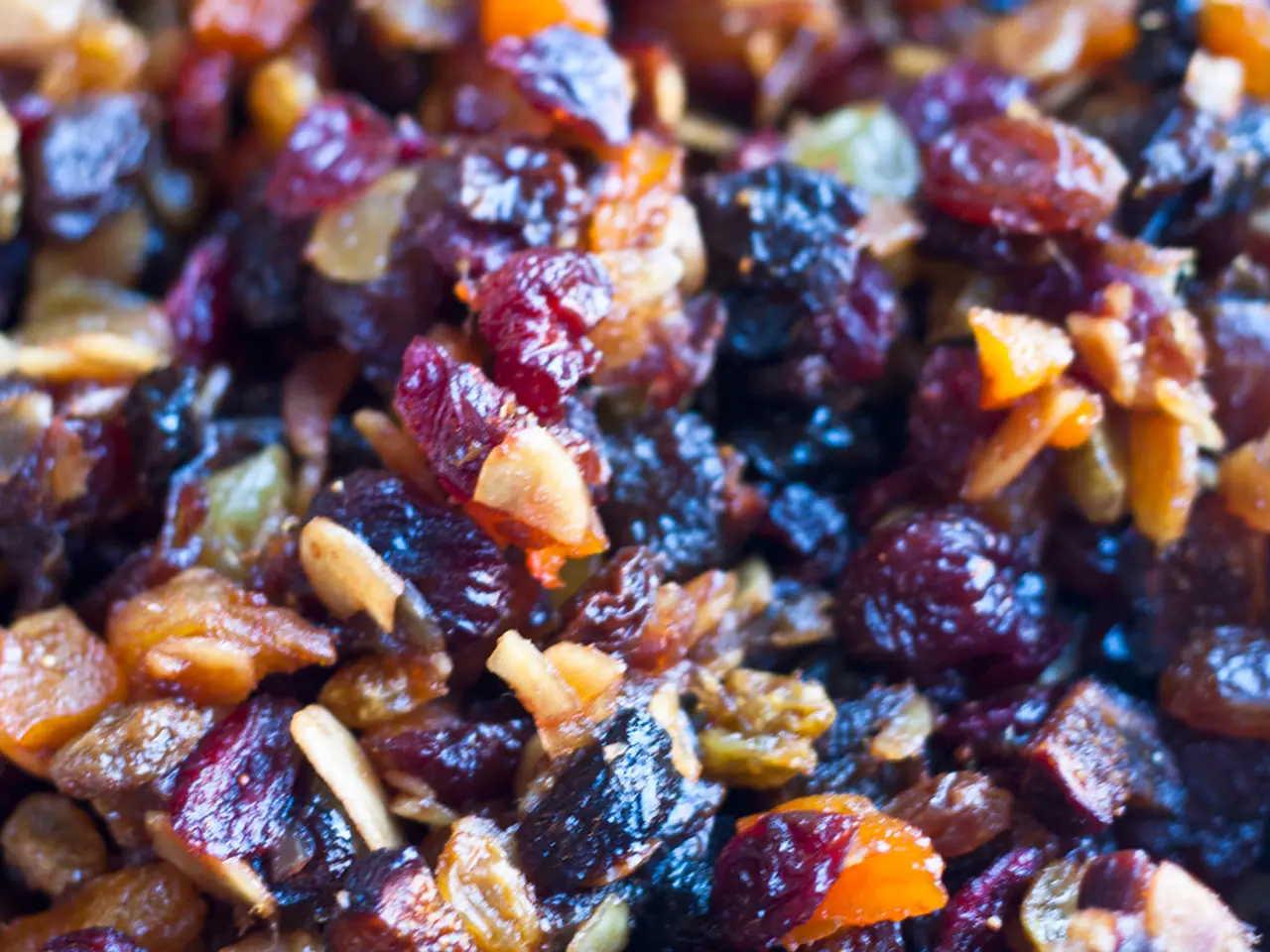Extract from Vaccinium macrocarpon, a common cranberry fruit, identified for potential beneficial health properties.
In a significant development, an applicant has submitted a proposal for the authorization of Vaccinum macrocarpon extract as a sensory additive/flavouring compound for use in pet feed. This extract, commonly known as cranberry extract, is intended to be incorporated directly into compound feed for cats and dogs.
To obtain authorization under Article 4(1) of the European context for feed additives, the applicant must provide a comprehensive technical dossier detailing the additive's composition, specifications, safety, efficacy, and intended use conditions. The dossier must also include validated analytical methods for the detection and quantification of the additive in feed to ensure compliance with authorized conditions.
The European Food Safety Authority (EFSA) will conduct a thorough risk assessment, including evaluation by their FEEDAP panel. If EFSA's opinion is favourable, the authorization proceeds through the European Commission and Member States.
Regarding the recommended quantitative methods for Vaccinum macrocarpon extract or similar flavouring compounds, standard practice involves chemical characterization techniques such as chromatography (e.g., HPLC or GC) coupled with appropriate detectors to identify and quantify the bioactive compounds within the extract. The European Union Reference Laboratory for Feed Additives evaluates these methods for reliability and reproducibility in detecting the additive in feed and related matrices.
However, in this application, the applicant did not submit a method for the determination of vaccinum macrocarpon extract in the compound feed matrix. The EURL recommends the proposed spectrophotometric method for the official control of the total proanthocyanidins (PAC) in the feed additive, but the unambiguous determination of the feed additive added to compound feed is not achievable experimentally, and no method for its determination in this matrix is recommended by the EURL at this time.
The phytochemical marker for vaccinum macrocarpon extract is PAC, with a range of 25 - 35% relative mass fraction in the feed additive. The proposed spectrophotometric method for determining PAC in vaccinum macrocarpon extract has a relative standard deviation for repeatability (RSD) ranging from 2.3 to 6.1%, and for reproducibility (RSD) ranging from 8 to 32%.
Further testing or validation of methods for the determination of vaccinum macrocarpon extract in the compound feed matrix will be performed by the consortium of National Reference Laboratories, as specified by Article 10 (Commission Regulation (EC) No 378/2005, as last amended by Regulation (EU) 2015/1761). This testing is not considered necessary at this time.
No minimum or maximum level of the feed additive has been proposed by the applicant in this application. The minimum content of the feed additive in compound feed for dogs is suggested to be 122 mg/kg, and for cats, it is suggested to be 155 mg/kg.
In summary, the authorization of Vaccinum macrocarpon extract as a sensory additive in pet feed is a significant step forward. While the applicant did not submit a method for the determination of the extract in the compound feed matrix, further testing will be conducted by the consortium of National Reference Laboratories. The proposed spectrophotometric method for determining PAC in vaccinum macrocarpon extract has been recommended for official control of the total PAC in the feed additive.
The applicant could consider incorporating a method for determining Vaccinum macrocarpon extract in the compound feed matrix, as this would be essential for ensuring compliance with authorized conditions during the feed production process. Moreover, the use of supplements derived from science-backed nutrition, such as cranberry extract, might contribute to health-and-wellness benefits for pets, as long as their efficacy and safety are thoroughly evaluated and properly monitored.




